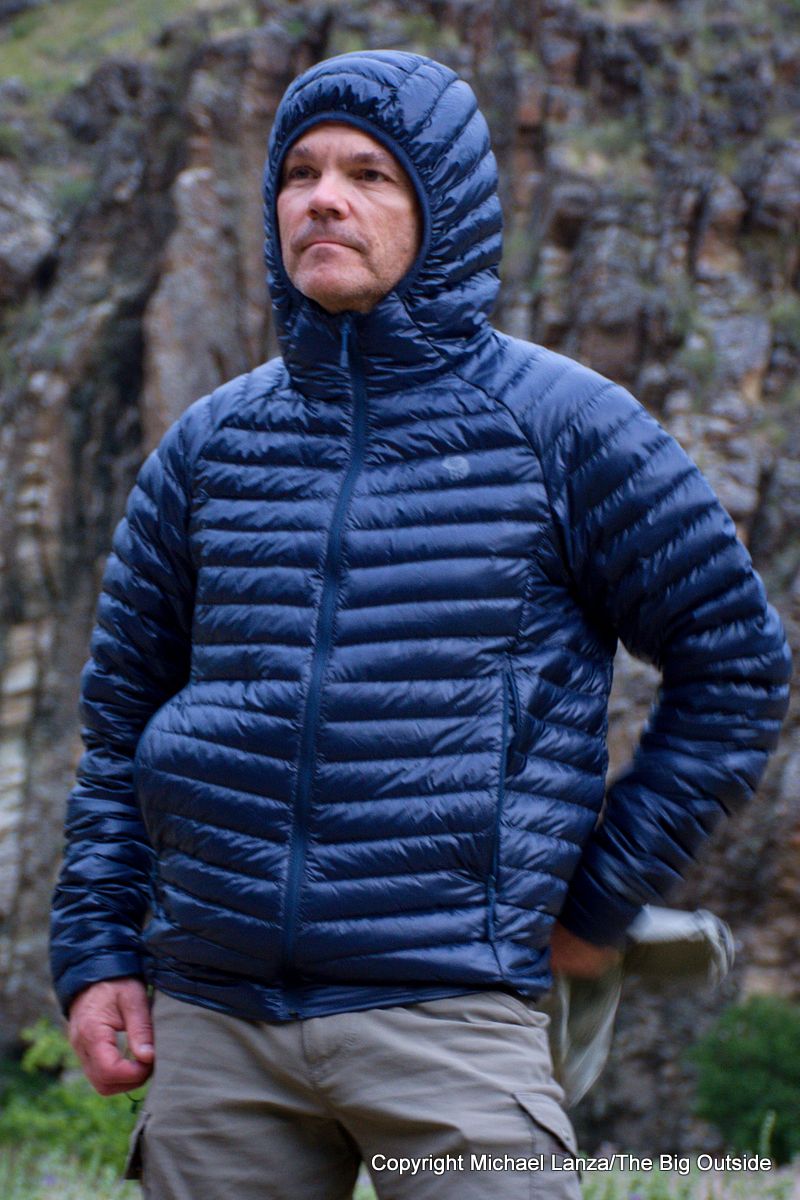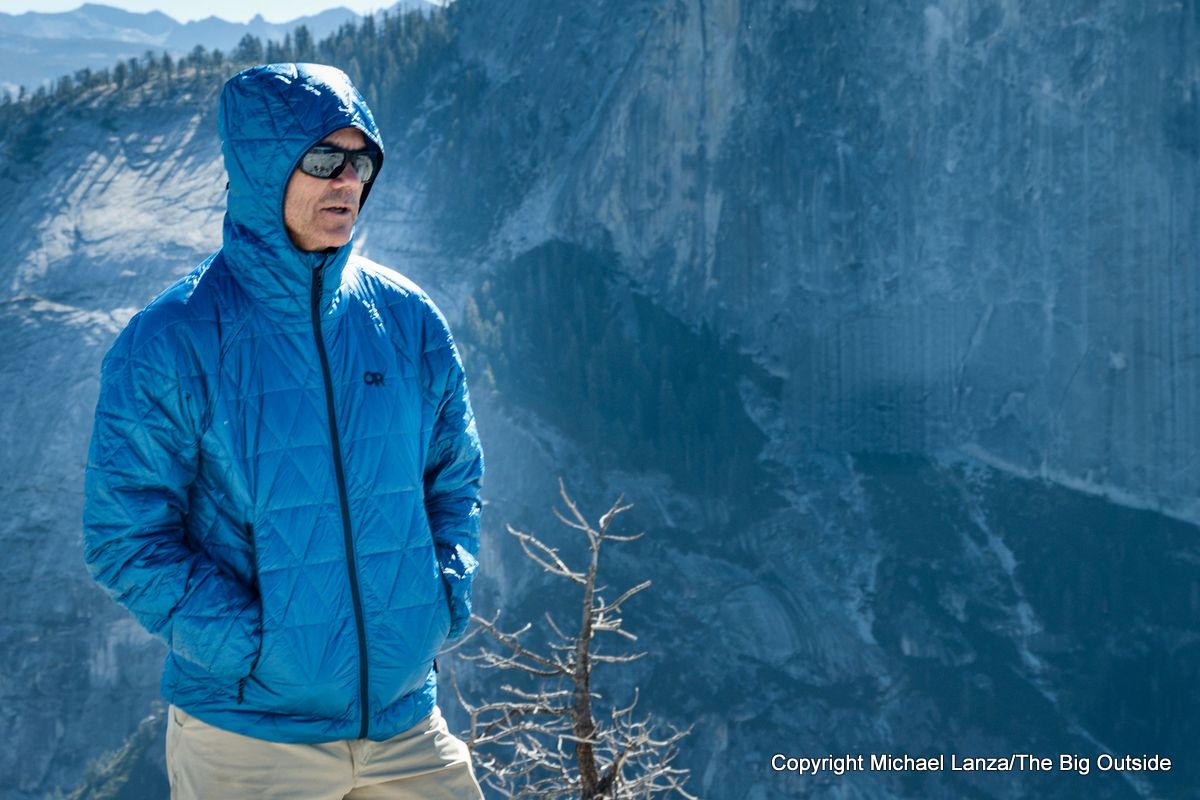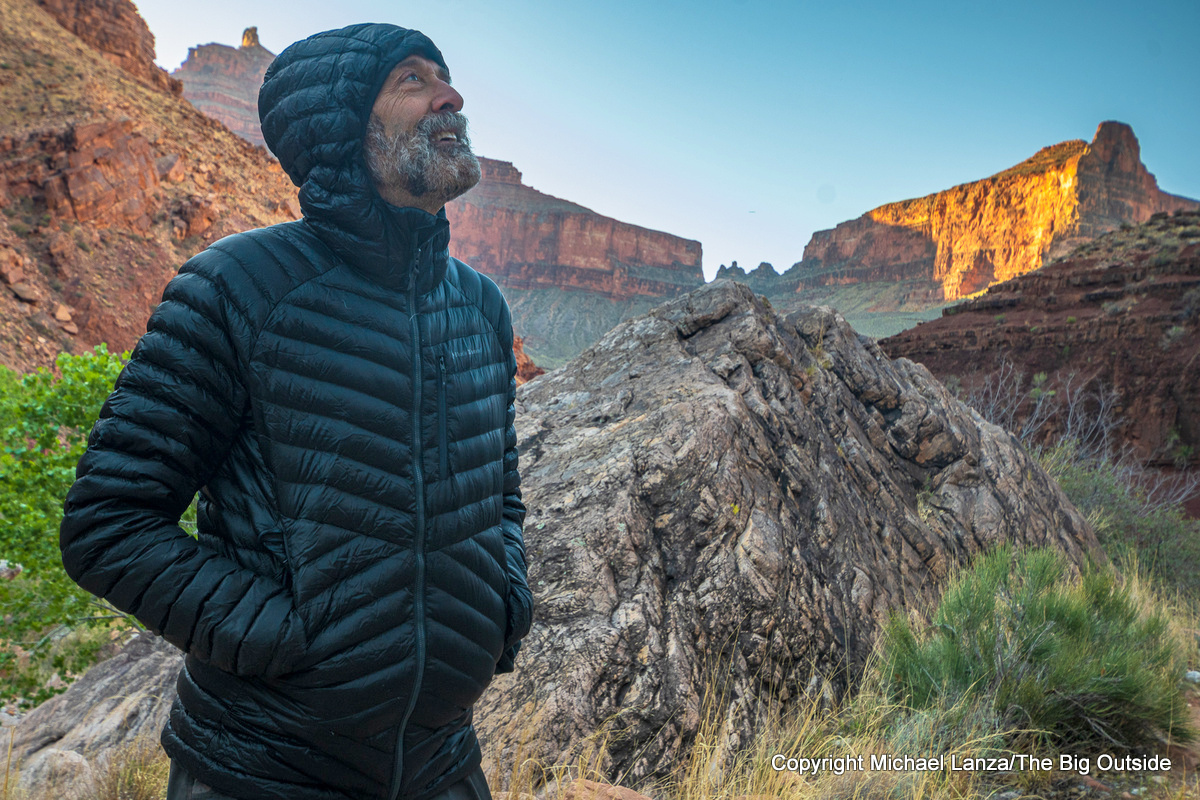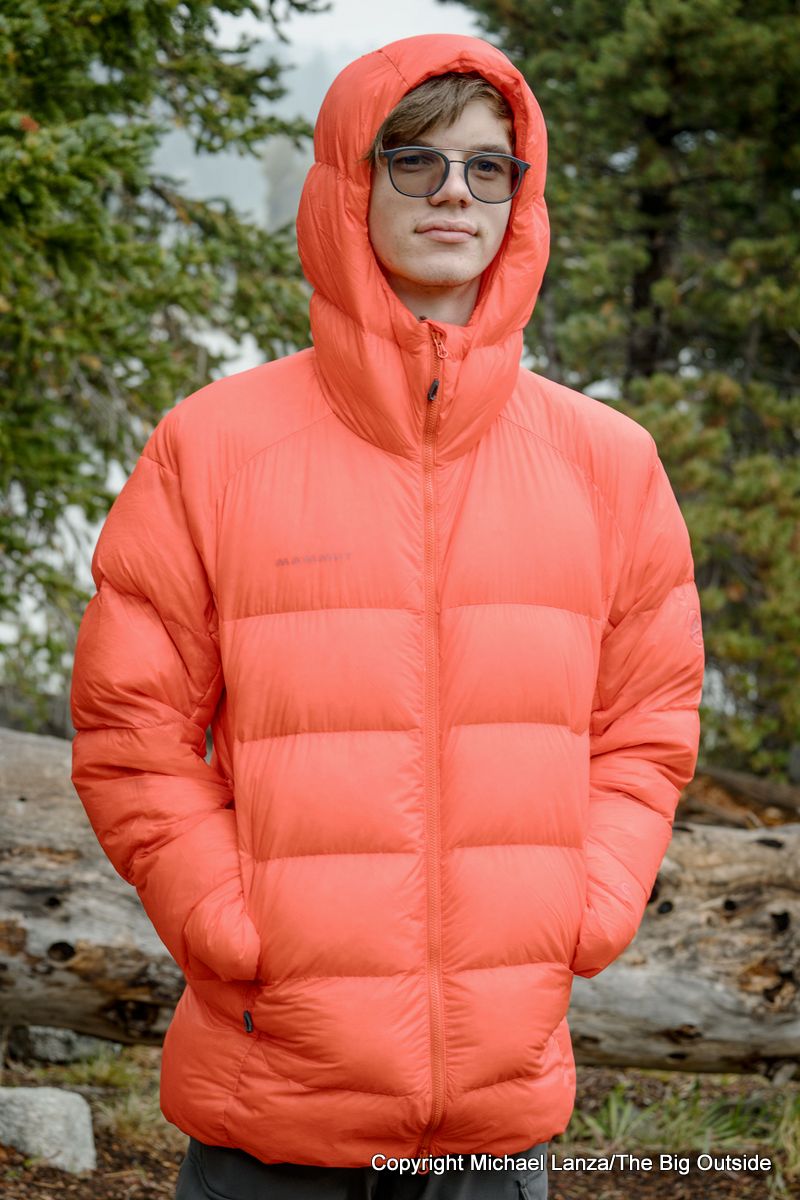By Michael Lanza
While sleeping bags have temperature ratings, with down jackets and other insulated jackets, there exists no easy way to determine how warm any specific garment will be without wearing it outside. But despite the absence of a precise metric for gauging the warmth of down and synthetic puffy jackets, there are ways to assess a specific jacket’s relative warmth before you even see it, using simple metrics. This article will explain how to do that.
Even though down and synthetic-insulation jackets don’t have ratings like sleeping bags (which, by the way, were not uniform for many years, though there is now a uniform bag-rating system; learn more in my “Pro Tips For Buying Sleeping Bags“), you can judge warmth using numbers easily available online. Over more than 25 years of testing and reviewing dozens of insulated jackets (and other gear and apparel), including the 10 years I spent as the lead gear reviewer for Backpacker magazine and even longer running this blog, I have found those indicators very reliable in helping me anticipate how warm at down jacket will be before I ever wear it.

The down fill weight is one way to tell, though it’s not strictly a measure of a jacket’s warmth—it’s only a measure of the total weight (in ounces or grams) of the down in the jacket. How much insulation is in the garment is obviously an important factor in warmth, but not the only one, because down comes in a range of quality ratings. And of course, various types of synthetic insulation have different weights and warmth-per-weight ratios.
The down fill rating (not to be confused with the down fill weight) is basically a quality metric, not an indicator of warmth. The fill rating refers to the volume, in cubic inches, that one ounce of that down fills; in other words, an ounce of 800-fill down will occupy 800 cubic inches of volume. Down feathers and other insulation keep you warm through trapping heat from your body in tiny air pockets within the insulation, so higher fill ratings mean more trapped air, which translates to more warmth per ounce of down.
Get the right synthetic or down jacket to keep you warm.
See “The 10 Best Down Jackets.”

Thus, if two jackets contain identical amounts of down feathers by weight, the jacket with the higher fill rating will very likely be warmer. But there are ultralight 800-fill jackets that obviously aren’t as warm as 700-fill jackets that have more ounces of down in them. You will usually pay more for higher fill ratings.
Consider the weather conditions in which you’ll use your puffy jacket. Standard down feathers lose their ability to trap heat once wet, making down insulation less practical in wet environments. Today, there are water-resistant (hydrophobic) treatments for down feathers that greatly improve the ability of those feathers to repel water, dry faster, and continue to trap heat when damp.
Nonetheless, a wet synthetic jacket is still probably going to keep you warmer than a wet puffy stuffed with hydrophobic down feathers.
In the real world, most of us rarely put ourselves in circumstances where our puffy jacket gets soaked; but consider that attribute of down and synthetic puffy jackets if you think there’s a possibility of facing that circumstance—or even a possibility of your puffy jacket getting damp and not having much opportunity to dry out. On a multi-day trip with rain or wet conditions every day, moisture from the air and your body can slowly accumulate in insulation, enough to cause down feathers to lose some loft and compromise the jacket’s warmth.
Find your next adventure in your Inbox. Sign up for my FREE email newsletter now.

Similarly, while synthetic insulation traditionally was not as lightweight, compactible, and durable as down, some modern synthetic insulation materials, like one of the better ones, PrimaLoft, have a warmth-to-weight ratio that competes with down, and are more packable and lightweight.
They’re also constructed in a way that’s likely to make them more durable than older synthetics, although down mostly retains the edge there: I owned one down sleeping bag (from Western Mountaineering) for about 25 years, using it on innumerable trips, and it did not noticeably lose any loft before I eventually sold it through a consignment shop (simply because I had replaced it with newer bags). I wouldn’t be surprised if someone’s still using that bag.
Plan your next great backpacking trip on the Teton Crest Trail, Wonderland Trail, in Yosemite or other parks using my expert e-guides.

Having a hood certainly keeps you warmer and is worth the nominal additional weight and cost. I consider a hood mandatory in cold temperatures (near and below freezing), but less important on milder trips, when I may pack a hoodless, ultralight puffy jacket to reduce pack weight and because I’m almost always bringing a light hat, anyway.

The way in which a jacket is sewn matters. In short, so-called “sewn through” construction stitches the outer, shell fabric to the inner, liner fabric, creating pockets of down, but also creating cold spots at seams where there’s effectively no insulation. This method reduces a jacket’s weight and often its cost, and is practical in ultralight jackets made for cool but not cold temps (think: summer in the mountains).
The more-expensive method of creating so-called box baffles eliminates those cold spots and makes a jacket look puffier, but adds weight and usually cost. Look for that type of construction in puffy jackets designed for temps near and below freezing.
I can help you plan the best backpacking, hiking, or family adventure of your life.
Click here now to learn more.

With down jackets, I generally simplify it to the following standard, which applies to my body (I don’t get cold easily) and will apply differently to other people, depending on how easily they get cold:

• For summer trips, when I’m trying to backpack ultralight and I expect temps no lower than the upper 30s or higher, I bring a down/puffy jacket weighing 8 to 10 or 11 oz. (total weight), and I supplement with my other layers or get in my bag when necessary.
• For trips when the temp could dip below freezing, I want a jacket that’s 12 to about 16 oz.
• For colder trips/winter, my jacket weighs 16 to around 20 or 22 oz.
I find occasional exceptions to those general weight guidelines, when a jacket is remarkably warm for its weight, usually because of the use of lighter materials, such as shell fabric, and construction methods that reduce weight.
See my review of “The 10 Best Down Jackets” and all of my reviews of puffy jackets at The Big Outside. And don’t miss my picks for “The Best Backpacking Gear” of the year.
You might also be interested in my review of “The Best Gloves for Winter,” which includes three-season gloves, and my “12 Pro Tips For Staying Warm Outdoors in Winter,” which offer products and tips that are also applicable to three-season backcountry trips.
